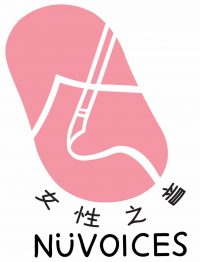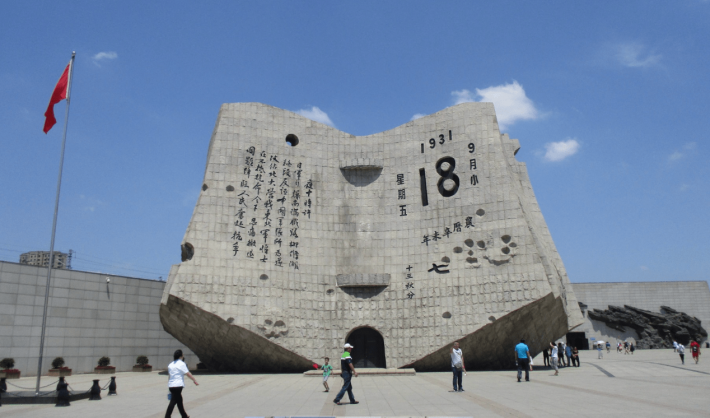BY EMILY MATSON
On July 7, 1937, a skirmish broke out between Chinese and Japanese troops stationed on the outskirts of Wanping, a village southwest of Beijing, that subsequently became known internationally as the “Marco Polo Bridge Incident.” Although the local forces were able to come to an agreement, the event ignited the powder keg of latent tension between the Tokyo and Nanjing (then China’s capital under the Nationalists) governments. By the end of July, Japanese troops had launched their rapacious, full-scale invasion of China.
Since then, the Marco Polo Bridge Incident became the unofficial marker of the start of China’s War of Resistance against Japan. That is, until January 2017, when China’s Ministry of Education made an unprecedented announcement: the official starting date of the war would be shifted to an event six years earlier.
Starting that spring, the Chinese government mandated that secondary school textbooks must define the War of Resistance as starting with the Mukden Incident on September 18, 1931 instead.
On this date, two junior officers in the Japanese Kwantung Army surreptitiously set off a bomb on a Japanese-owned railway running through the city of Mukden (today’s Shenyang). Subsequently, this renegade army–operating without the knowledge of the civilian government in Tokyo–disseminated “fake news,” claiming that the bomb was the work of Chinese terrorists. Japanese property and persons in Manchuria, they argued, must be protected, and Manchuria must be controlled by Japan. This ultimately provided the Kwantung Army with its justification for invading China’s Northeast, culminating in the establishment of the puppet state of Manchukuo under the Qing Dynasty’s last emperor, Aisin Gioro “Henry” Puyi, the following April.
“The Northeast is the region that suffered the most seriously from the war between China and Japan,” said Qingyuan, a 20-year-old overseas university student originally from Changchun, Jilin Province, over a Zoom call. “Our generation does not have the right to forgive the crimes of Japanese militarism because our ancestors sacrificed themselves in resisting Japan. Forgetting history amounts to betrayal (忘记历史就等于背叛).”
Why did the Chinese Communist Party (CCP) change the war timeline? Officially, the CCP’s justifications were explained in clear-cut fashion by a Party journal article written by prominent Central Committee historian Cao Ziyang in 2017. Cao stated that the 14-year war timeline highlights the important position of the Chinese People’s War of Resistance against Japan within the global Anti-Fascist War (World War II), showcases the lengthy and tortuous (to paraphrase Mao Zedong) nature of the war, and underlines the great sacrifices and contributions of the Northeast United Resistance Army under the leadership of the CCP and Nationalist patriots.

While acknowledging contributions by scholars who defended the 8-year war timeline (starting in 1937, ending in 1945), Cao made the Party’s position clear: although the Marco Polo Bridge Incident was the start of the “full-scale war” (全国性抗战), the Mukden Incident was the proper starting point of the overall War of Resistance, which included the six years of “partial war” (局部性抗战) from 1931-1937. In 2021, Cao also issued an official statement on the importance of both 1937 and 1931 to the overall narrative.
In this case, we should take the CCP’s official policy at its word. Shifting the timeline both strengthens the CCP’s legitimizing narrative domestically (after all, the Party fought back against the Japanese invasion while the Nationalists adhered to Chiang Kai-shek’s “nonresistance” policy) and reassures international actors that since China was a moral actor then, it will continue to uphold the international order as a responsible power now, as it continues to rise peacefully. Some scholars have even posited that the decision to lengthen the timeline of the war was made primarily with a global audience in mind.
But how do young Chinese people feel about this new timeline? Under the leadership of Xi Jinping, there has been a concerted shift in the education system to emphasize the historical experience of the Party, which includes more coverage of the Party’s role in the War of Resistance.
Sophia (a pseudonym), a 33-year-old from the city of Daqing in Heilongjiang Province, says that growing up she was under the impression that Marxist ideology was more important than history. However, under “Xi Dada,” she feels there is now more focus on modern Chinese history in classrooms because “a nation that forgets his history doesn’t have a future” (忘记历史的民族是没有未来的), she said.
John (not his real name), a 23-year old graduate student from Jilin Province, also defended the 14-year war timeline, noting that after 1931, there was fighting not only in Manchuria, but also in other areas of northern China including Huabei, Rehe, and Hebei provinces.
However, although he is strongly in favor of the Mukden Incident starting date and feels proud that Northeasterners are now being represented more widely in Chinese mainstream media about the war, he does have certain reservations. Contemporary propaganda has the potential to “evoke violence in contemporary society,” he said, such as fanning the flames of anti-Japanese sentiment.
During the September 2012 anti-Japanese protests in China that were triggered by the Diaoyu-Senkaku Islands dispute, John’s father was afraid that if he drove the family’s Japanese-made car on the street, it would be vandalized, he added.
For young Chinese people who are not from the Northeast, however, the government’s framing of the war timeline may not hold much significance, according to Hao, a 24-year-old historian from Guangdong Province. Hao added that the original timeline was more historically accurate. “I think that from the Marco Polo Bridge Incident, there was a more symbolic sense of coordinated and unified national efforts against the Japanese. That was not the official narrative before 1937,” he said.
Muyun, a 24-year-old young professional from Ningbo in Zhejiang Province, graduated high school in spring of 2017. She distinctly remembers her teacher instructing the class as early as 2016 that even though their textbook still said that the War of Resistance against Japan was an “8-year war,” the correct timeline was the “14-year war,” and that they should make a note of this for their exams. “The new timeline is reasonable because the Northeast belonged to China at this time,” she said.
This September, China will once again commemorate the anniversary of the Mukden Incident as a key National Humiliation Day. Originally introduced after May 9, 1915 to commemorate Japan’s infamous “Twenty-One Demands,” the concept of National Humiliation Day(s) fell into disuse after the 1940s. It was resurrected in 2001 and now falls on the third Saturday of September (which occasionally falls on September 18, officially designated as National Defense Education Day).

The concept is now an important part of the contemporary narrative of China’s “Century of Humiliation” (百年国耻), scholar Zheng Wang explains. Wang says this narrative became a central component of Chinese discourse after the 1991 Patriotic Education Campaign, and has been further amplified under Xi.
Annual National Humiliation Days such as September 18 will continue to play a crucial role in Xi’s national rejuvenation narrative, which in recent years has been applied to China’s domestic and foreign policy agendas. As Xi himself said in a speech to commemorate the 75th anniversary of the end of World War II in 2015, the Mukden Incident “became the starting point of the Chinese people’s War of Resistance against Japan and revealed the prologue of the global Anti-Fascist War) (成为中国人民抗日战争的起点,同时揭开了世界反法西斯战争的序幕).
Xi’s words echoed that of a previous leader–Mao Zedong. In April of 1945, Mao reported to the CCP’s Seventh National Congress: “The Chinese people’s War of Resistance has followed a torturous course. It began as far back as 1931” (中国人民的抗日战争,实在曲折的道路上发展起来的。这个战争,还是在一九三一年就开始了).
Although drawing too close a connection between Mao and Xi’s leadership styles is misleading, there are striking similarities in how both have manipulated the history of the War of Resistance in order to bolster Party prestige. In a brilliant historiographical subterfuge, both Xi and Mao have managed to equate the CCP with “China” in the War of Resistance, thus effectively sidelining the contributions of the Nationalists and creating a teleological narrative in which the party’s historical rise to power is all but inevitable.

About the author
Dr. Emily Matson received her PhD in Modern Chinese History in fall 2020 from the University of Virginia. After graduation, she was a Wilson Center China fellow, taught East Asian history at the College of William and Mary and American University, and is teaching at Georgetown University this fall. Her research interests include Northeastern China (东北), the War of Resistance against Japan (抗日战争), historical memory, and museums. Dr. Matson has extensive teaching experience and recently created two new freshman seminars at William and Mary: “Historical Memory of WWII in East Asia” and “The Life and Legacy of Mao Zedong.” Visit her website

